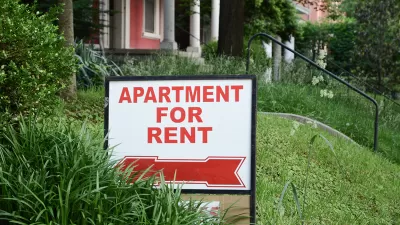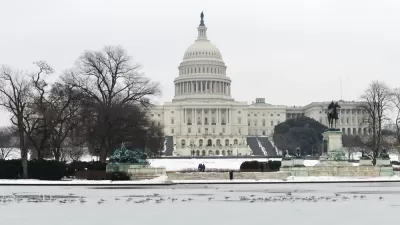People are moving less and rents are dropping, according to a new report from Apartment List.

Chris Salviati, Igor Popov, and Rob Warnock share data and analysis from the Apartment List National Rent Report from September, reporting one key finding that confirms what a lot of people have been expecting to see since March: declining rents.
According to the report, rents across the nation are down 1.4 percent compared to last year, and rents have declined in 41 of 100 largest U.S. cities, with significant variation depending on geography.
According to the article that shares news from the September rent report, rents tend to dip in September, but this September's dip follows a trend that continued throughout the summer:
In September, our national rent index dipped 0.1 percent. Normally, a September rent dip would be considered par for the course, and we saw similar declines in September of 2019 and 2018. But usually this dip follows a steady increase in rents through the summer peak season. In 2020, that peak season was severely disrupted by the shelter-in-place orders that defined the early stages of the pandemic, which caused a sharp dropoff in moving activity that put downward pressure on prices. Although the downward trajectory of our national index has since levelled off, rents are still down 1.4 percent compared to this time last year.
As for the varied geography of rent declines, here's what the report finds:
While rents are down nationally, the effects of the pandemic and its implications for the rental market have varied significantly by geography. Some smaller and more-affordable markets have seen rent growth quickly spring back to life after just a brief dip in the early months of the pandemic. Meanwhile rents in some of the nation’s most expensive cities are continuing to plummet.
San Francisco leads the nation, with rent declining by 17.8 percent for a two-bedroom apartment since March. New York City follows with 11.6 percent, and Seattle with 9.9 percent. Meanwhile, rent is growing fastest in cities like Boise, Toledo, and Greensboro.
While it might be tempting for renters in big, expensive cities to look at this news as welcome relief from the long-term climb of rental prices, the report notes that some of the dropping prices are caused by many renters looking to downgrade amidst financial hardship.
FULL STORY: Apartment List National Rent Report

Planetizen Federal Action Tracker
A weekly monitor of how Trump’s orders and actions are impacting planners and planning in America.

San Francisco's School District Spent $105M To Build Affordable Housing for Teachers — And That's Just the Beginning
SFUSD joins a growing list of school districts using their land holdings to address housing affordability challenges faced by their own employees.

The Tiny, Adorable $7,000 Car Turning Japan Onto EVs
The single seat Mibot charges from a regular plug as quickly as an iPad, and is about half the price of an average EV.

Seattle's Plan for Adopting Driverless Cars
Equity, safety, accessibility and affordability are front of mind as the city prepares for robotaxis and other autonomous vehicles.

As Trump Phases Out FEMA, Is It Time to Flee the Floodplains?
With less federal funding available for disaster relief efforts, the need to relocate at-risk communities is more urgent than ever.

With Protected Lanes, 460% More People Commute by Bike
For those needing more ammo, more data proving what we already knew is here.
Urban Design for Planners 1: Software Tools
This six-course series explores essential urban design concepts using open source software and equips planners with the tools they need to participate fully in the urban design process.
Planning for Universal Design
Learn the tools for implementing Universal Design in planning regulations.
Smith Gee Studio
City of Charlotte
City of Camden Redevelopment Agency
City of Astoria
Transportation Research & Education Center (TREC) at Portland State University
US High Speed Rail Association
City of Camden Redevelopment Agency
Municipality of Princeton (NJ)





























